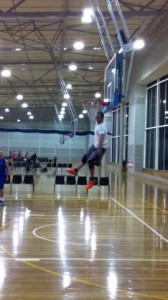Jack Woodrup of VerticalJumping.com on How you would know if a vertical jump training program is marketing hype?
By Jack Woodrup

When I first got interested in vertical jump training I was shocked to discover that at the time nearly all the jumping programs that were available for sale were quite frankly terrible. One reason for this is that a very large part of the vertical jump market is made up of highly impressionable teenage boys wanting to slam dunk a basketball.
No offence to teenage boys (I was after all one myself at some point), but the biggest thing they don’t get is just how little they actually know about things. I am sure I am not the only adult who looks back on his teenage years and thinks “If I only knew then what I know now”. Fortunately these days the internet has made is significantly easier to research the various jump programs available and find out if they are any good or not, but in order to help you out here are a few things to look for.
Firstly, does the sales pitch make promises of guaranteed gains? If the answer is yes be wary. I know it helps reassure people if they think they are going to buy a program and 12 weeks later be jumping 10 inches higher, and this sort of thing definitely helps people make more sales, but the truth of the matter is, any real coach will tell you that guaranteeing a specific minimum result for people is actually impossible and to do so is to tell a lie.
You see everybody is different and has different strengths and weaknesses, and different starting points. An absolute beginner who has never training might indeed improve 10 inches on 12 weeks, but a more advanced athlete might be lucky to get 1 or 2 inches in 12 weeks.
So as counter intuitive as this is, if you are after a program that is going to treat you right (i.e. not lie to you even before you make a purchase) then look for one that doesn’t make outlandish claims of guaranteed inches.
Another key indicator for determining what is a good program or not is how customised that program will be to you. As I mentioned earlier, everyone has different strengths and weakness and they shouldn’t be trained the same way. One size fits all programs, or cookie cutter programs as they are known, will treat every athlete identically and have them train the same way using the same set of exercises, sets and reps.
So why is this such a big mistake in a training program? Well jumping is a function of relative power, and relative power is a function of strength and speed (how quickly you can apply your strength). So a strong but slow athlete will get a lot more benefit from a plyometric and jumping focused program, while a weaker athlete would do better by hitting the weight room to increase their strength.
To recap if the jump program you have bought, or are looking to buy doesn’t make outlandish claims and false promises, and it is customized to your individual needs than these two very good signs that the jump program has been written by someone who actually knows the subject well and is honest enough to not try cheap marketing lies to sucker you out of your hard earned cash. And in my book, if I was forking over my hard earned cash and putting my jump training in someone’s hands, I would want it to definitely be that sort of a person.

The point of view of your article has taught me a lot, and I already know how to improve the paper on gate.oi, thank you. https://www.gate.io/zh-tw/signup/XwNAU